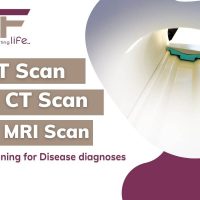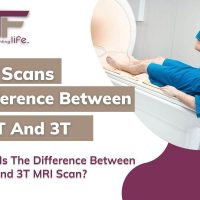Are you looking forward to knowing how is Parkinson’s diagnosed? Well, you have come to the right place!
Although there is no such blood test or X-ray that can accurately diagnose Parkinson’s, here, in this article, we shall discuss how the doctors confirm the existence of this disease.
For Parkinson’s, doctors usually pursue a series of clinical processes to come to a conclusion.
They carefully observe & examine the symptoms, medical & family history, environmental factors, and workplace conditions. Sometimes, your doctor may even recommend a non-invasive imaging test like positron emission tomography or PET scan.
Since Parkinson’s revolves around the loss of dopamine-producing nerve cells in the brain, thereafter making dopamine production obsolete, your doctor may also call for a DaT scan. This particular scan is nothing, but a Dopamine Transporter Scan, investigating the dopamine-containing neurons that control body movements.
Do you want to know it all in detail? If so, please continue reading below.
CContents
How Is Parkinson’s Diagnosed through Primary and Secondary Symptoms?
Doctors look for certain physical symptoms when diagnosing Parkinson’s disease. In this regard, there are two types of symptoms, namely, primary and secondary. Primary symptoms are motor-related or movement-related, while the secondary ones are non-motor.
Why not have a look at them?
Motor-Related Symptoms: Primary!
Bradykinesia or Slowed Movements
Parkinson’s patients have slow movement than normal, even when performing a simple task. For them, it may seem like a muscle weakness that slows them down, but such a condition is not driven by strength loss in reality.
Tremors in The Body
Parkinson’s patients experience rhythmic shaking when the muscles lay at rest, unlike essential tremors that disappear with muscle relaxation. It is one of the most common symptoms of Parkinson’s and occurs in almost 80% of the cases.
Muscle stiffness or Rigid Body Movement
Whenever Parkinson’s patients move a body part, the movement reflects a constant stiffness. Such a condition is called lead-pipe rigidity in medical science. In fact, sometimes, this condition gets accompanied by tremors and is called cogwheel stiffness.
Abnormal Postures and Impaired Balance
A Patient with Parkinson’s may have a weak balance and absurd body postures. This specific state typically emerges in the later stages of Parkinson’s. While the patients walk, they take shorter steps, and in case you ask them to turn back while walking, they require multiple steps to do so!
Deterioration or Loss of Involuntary Movements
Parkinson’s patients can barely move their arms while walking, which normally stands involuntary to us all. The patients cannot smile properly or blink, indicating that their facial muscles lack control to perform unconscious movements.
Drooling or Unconsciously Salivating
If a person constantly drools, i.e., involuntarily releases excess saliva from the mouth, there’s a plausibility that the person has Parkinson’s. Because such a condition typically occurs due to the loss of control in the facial muscles, a motor-related issue during Parkinson’s!
Hypomimia or Poker-Face Expression
When a person shows a static or blunt expression all the time, it is called Hypomimia, which occurs during Parkinson’s. The patients cannot express their emotions through their faces due to the reduced speed and coordination between their facial muscles.
Absurd Speech Change
Parkinson’s patients have an unusual change in their speaking style. They tend to have soft or quick speech that appears confusing to the listeners. Moreover, it may seem monotonous and hesitant because of the decreased control of the throat and chest muscles.
Trouble Swallowing or Dysphagia
Patients with Parkinson’s have difficulty swallowing any food or drink. Such a condition occurs due to decreased muscle control in the throat and chest. This state is called dysphagia, according to medical science.
Unusual Change in the Writing Pattern
You are likely to encounter an abnormal change in the writing pattern of Parkinson’s patients. Their handwriting turns minute and cramped and is difficult to read or interpret. Medical experts call this condition micrographia.
Non-Motor Symptoms
Depression
Depression is one of the most common non-motor symptoms in Parkinson’s patients, occurring in about 50% of the cases. Such a condition develops from the drastic chemical changes in the brain due to the lack of dopamine.
Problems in the Autonomous Nervous System
Non-motor red alerts of Parkinson’s appear as various problematic conditions in the autonomous nervous system, such as sexual dysfunctions, constipation, urinary incontinence, low blood pressure when the patient stands up, gastrointestinal diseases, and more!
Sleep Disorders
According to clinical experts, sleep disorders are likely to accompany Parkinson’s disease. That is why patients with Parkinson’s witness symptoms like periodic limb movement disorder, rapid eye movement behavioral disorder, and restless leg syndrome.
Parkinson’s-Induced Dementia
During the advanced stages of Parkinson’s, patients may experience dementia, a condition involving episodic memory loss, difficulty thinking, lack of concentration, and loss of perceiving abilities.
The doctor conducts a physical examination to see these symptoms. The presence of two of more above-laid primary symptoms may affirm that a person has Parkinson’s. Some of the primary and secondary symptoms also indicate the stage.
In order to reconfirm these motor and non-motor symptoms, doctors pursue a few tests like gait & balance, muscle tone, agility, writing abilities, etc. They may also recommend neurological tests.
Can you now understand how is Parkinson’s diagnosed at the initial clinical level?
What Factors Does Your Doctor Look at for Detecting Parkinson’s Disease?
After examining the symptoms, doctors ask about the patient’s medical history, family history, and workplace details to understand what leads to Parkinson’s. Though the actual cause of this disease is unknown to medical science, some factors may act as a catalyst.
Understanding Family History
Doctors ask whether anyone from the bloodline had Parkinson’s or other brain-related diseases. It is because genetics play a role in triggering Parkinson’s. Doctors may seek to learn and understand if there is a gene mutation of some specific types, like autosomal dominant genes and autosomal recessive genes.
Inquiring about Medical History
Doctors may raise questions like whether there was a past episode of brain injury or infections. They ask whether the patient has a history of Huntington’s disease, Alzheimer’s disease, metabolic disarrangement, and low urate levels in the blood. Doctors may also ask about past and present medication in-takes. This is because all of these can prompt Parkinson’s.
Introspecting Workplace Conditions
For diagnosing Parkinson’s, your doctor may ask about the patient’s workplace conditions like exposure to pesticides or toxins such as manganese or carbon disulfide. It is because people working within such surroundings are vulnerable to the development of Parkinson’s.
Once the doctor can predict the existence of Parkinson’s from these factors alongside the symptoms, they are likely to recommend a few tests, depending on their predictions.
PET Scan to Diagnose Parkinson’s: How Does it Work?
As you want to learn how is Parkinson’s diagnosed, please note that your doctor may prescribe a PET Scan to diagnose it with a detailed layout. It is the imaging test that allows medical professionals to visualize the metabolic processes in a patient by using a radioactive tracer.
A PET scan can help doctors to detect the severity of Parkinson’s by locating various changes in the patient’s brain chemistry. The PET scan is also a test often pursued to check the responses to Parkinson’s medications.
Are you wondering how it takes place? Discover now!
Step 1 –
During this process, a team of caregivers in a diagnostic center comes into action. They administer a radioactive compound into the patient’s bloodstream via intravenous injection.
Step 2 –
Then, the radiology professionals ask the patient to lie on a moveable table that slides into a doughnut-shaped machine. This machine lay connected to a computer console to derive the visual images.
Step 3 –
Meanwhile, the radioactive tracer reaches the brain, and the patient gets moved into the scanning machine. Now, the plugs go on, and the scanning starts! Here, the distribution of the tracer across the various brain parts gets generated as 3D images on the computer screen, thereby highlighting the brain metabolism.
That’s all! In about 30 to 40 minutes, as the radiologist can fetch a precise image of the brain functions, they stop the scanner. Then, the diagnostic center sends the report to your doctor.
DAT Scan to Diagnose Parkinson’s: What is The Procedure?
Sometimes, when the PET scan results cannot provide a conclusion on Parkinson’s, doctors go for a DAT scan. The test is exclusively to access the dopamine level in the brain and its functioning. The DaT scan image highlights the dopamine receptors cells in the striatum.
A DAT scan is a single-photon emission computer tomography (SPECT) imaging test undertaken in adults whose symptoms overlap with other neurological conditions or when the information generated isn’t enough to confirm Parkinson’s.
Now, you must be thinking about how this test takes place!
Step 1 –
Similar to PET scans, a DaT scan requires a radioactive compound, which is iodine-based. So, on arrival at the diagnostic center, the patient receives an oral liquid medicine to block the thyroid from up-taking iodine. After an hour, the caregivers inject the radioactive compound into the patient’s blood; and then ask the patient to wait 3 hours.
Step 2 –
Once the clock ticks its time, the radiologist asks the patient to lie on a bed attached to a small head cradle. Herein, two cameras move around the patient’s head to extract the internal brain image.
Step 3 –
As the images pop up on the computer screen connected with the cradle cameras, the radiologist starts looking for the dopamine receptor cells in the brain and conducts scanning until an accurate image gets extracted.
After about 25 minutes, the technologist lifts the cradle and asks the patient to get up from the bed and leave the diagnostic room. Next, after translating the radiology report, the diagnostic center dispatches it.
Final Thoughts:
By now, you know how is Parkinson’s diagnosed and how doctors determine the severity of this disease. While the diagnosis stands completed, the doctor initiates the treatment, maybe with medications like levodopa or deep brain stimulation surgery, and so on!
However, you cannot up-take a Parkinson’s diagnosis by yourself or understand the severity. Perhaps, you need expert help! Hence, it is advisable to immediately visit a doctor when you see any symptoms, as mentioned above, instead of jumping to your own conclusion!










Comments